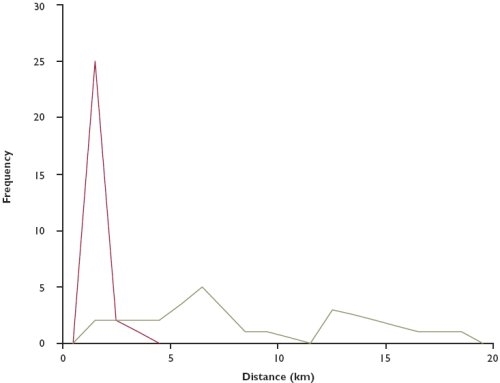Key finding
- Due to the limited dispersal capacity of male black grouse, to meet the BAP targets of expanding the range and linking isolated populations, we are using translocation of males to expand their range..
The black grouse population in the UK has declined and contracted owing in part to the direct loss, fragmentation and degradation of habitat. In northern England following the instigation of conservation measures, numbers increased from 773 displaying males in 1998 to 1,029 in 2006, meeting the 2010 BAP target of increasing numbers to 1,000 males ahead of schedule. Despite this increase in abundance, occupied range remained stable. Conservation effort therefore focused on delivering the next BAP target, that of increasing range from 42 occupied 10km grid squares to 61 by 2030. Range expansion is thought to be limited by the low dispersal capacity of male black grouse, with males in northern England dispersing only an average of 0.8km compared to juvenile females, which disperse on average 9.3km (Figure 1). These findings suggest that yearling females may disperse into and re-colonise areas of suitable habitat on the fringe of the range where there are no males present.
Figure 1: Dispersal distances of 28 male and 20 female black grouse in the North Pennines, 1998-2004

To stimulate range expansion, we instigated a trial in 2006-10, funded by the SITA Trust, to try to establish new leks on the fringe of the range by moving males to attract dispersing females. This initial phase of the work provided encouraging results, with males establishing leks thatattracted females which subsequently settled and bred (McEwen et al., 2009) resulting in range expansion into formerly occupied areas. In 2011, to quantify this work further we secured funding from Biffaaward, Yorkshire Water and a private landowner to extend this work for a further three years in the Yorkshire Dales.